From Azad Hind Fauj to the INA Trial: Examining the Last Stand for Independence
Though, in 1945, the Allied powers of Britain and America conquered World War II, surprisingly, the British transferred power to India and ended colonial rule in 1947. Hence, an interesting question always remains and that is “Why did the British leave India?” Most historians and researchers claim that colonial rule ended because of the Quit India Movement of Mahatma Gandhi along with the Indian National Congress. However, the Quit India Movement took place in 1942; the British won World War II in 1945 and left India in 1947. This statement indicates that after World War II something fascinating happened and that forced the British to transfer the power over to India. It is a matter of fact that it was exclusively the Indian National Army Trial that created an extensive uprising of Indian people successfully terminated the British Empire and gave India its independence.
Before exploring the Indian National Army Trials, it is required to know about the Azad Hind Fauj or Indian National Army (INA) at first. The INA was an armed force formed by Indian Nationalists and Imperial Japan in 1942 in Southeast Asia at the time of World War II (Fay ). The motive of INA was to secure the independence of India from the British Raj. It was founded by Mohan Singh with Indian prisoners of war of the British Indian Army captured by Japan in the Malayan campaign and in Singapore (C. Lebra). The first INA collapsed and was disbanded in December 1942 due to segregation between the INA leadership and the Japanese military over its role in Japan’s war in Asia. Auspiciously, Rash Behari Bose handed over the control of INA to Netaji Subhas Chandra Bose (Lebra).
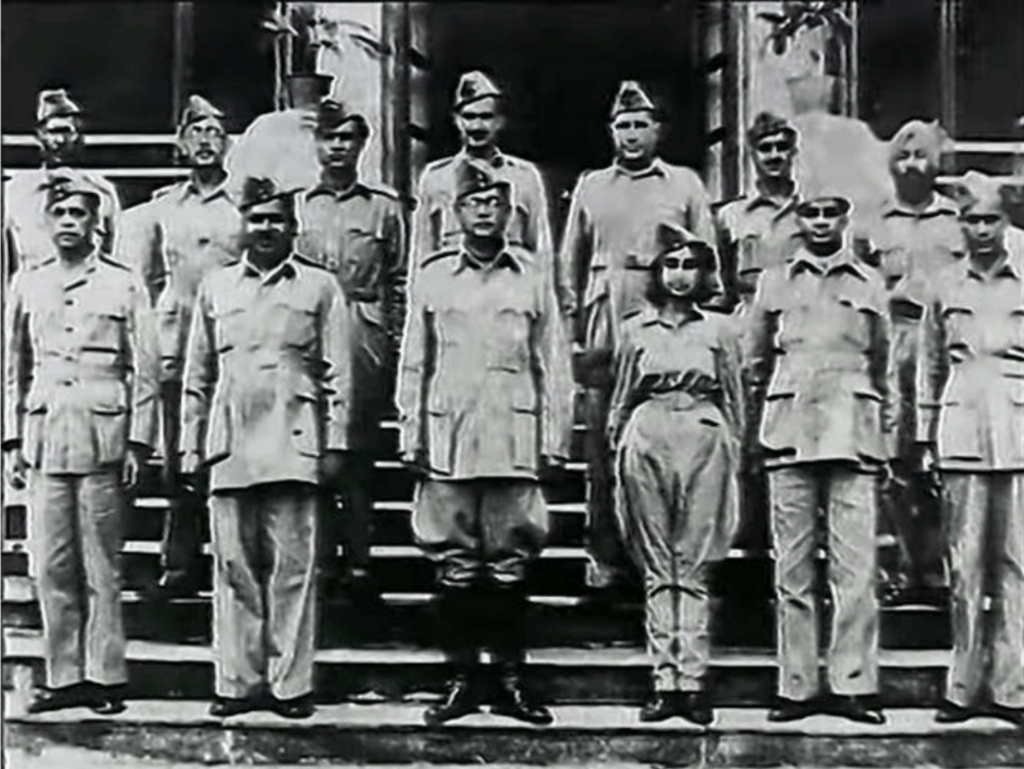
It was revived under the leadership of Netaji after he arrived in Southeast Asia in 1943. Netaji effectively influenced the governments of Germany and Japan in favour of securing the Indian freedom struggle. In the midst of World War II, Japan took control of Burma. meanwhile, British forces suffered defeats. The INA endures challenging conditions including dense forests, treacherous hills, relentless rainfall, and harsh weather, and occupied Manipur. The resounding patriotic slogan of “Delhi Chalo” (March to Delhi) echoed across the extensive places that had previously been under the domination of the British (Mohanty). The INA registered its first Victory on Indian soil while fighting alongside the Japanese Imperial Army in Rakhine, Manipur, and Nagaland. At Moirang, Manipur, INA unfurled Indian soil for the first time in April 1944 (“Indian National Army ”). Then logistics were in very bad shape. There was no ammunition and food left. Next, British forces conducted a series of air raids on the occupied areas. As a result, the combined forces of INA and Japan had to retreat. Ultimately, on 2nd September 1945, World War II ended with the victory of the Allied powers.
The most common event that takes credit for the departure of the British Raj is the Quit India Movement. On 9th August 1942, Mahatma Gandhi
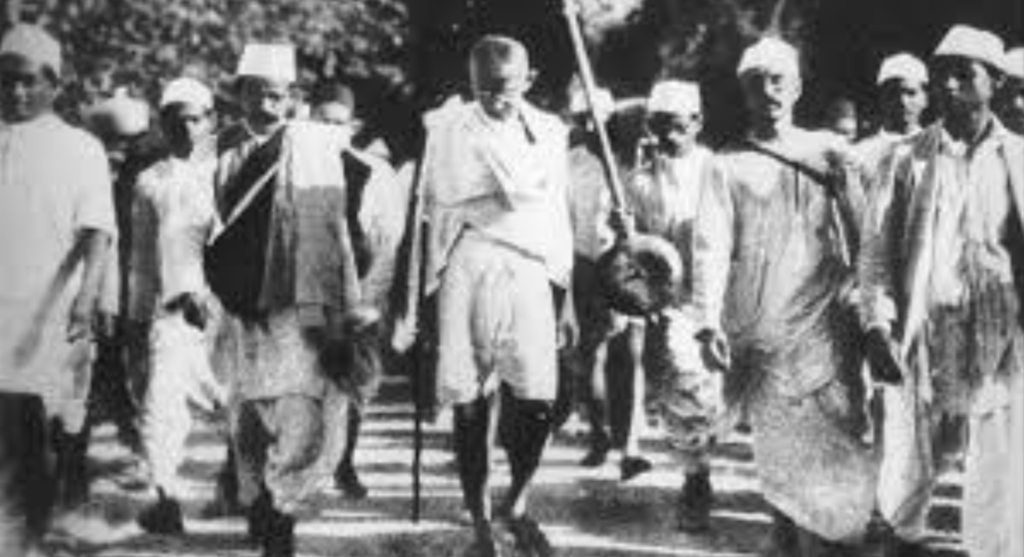
officially launched the movement at Gowalia Tank, Bombay with the support of Congress. “Do or die” was the slogan of that movement. Indian people were involved in the movement and tried to force the British to leave India. But even a 21-day fast Gandhi in jail could not bring any victory against the British Empire.
After the release of Gandhi from jail on medical grounds on 6th May 1944, the Quit India Movement was formally ended. In reality, the British government was not affected by this movement at all and controlled the situation efficiently. As a result, it is not an appropriate idea that the Quit India Movement of Gandhi and Congress ended colonial rule in India.
On the other hand, we have the uprising of Indians after the INA trials that started in 1946 to be considered the major valid cause for the ending of the Empire. After World War II, several INA officers and soldiers who were captured during the war were executed. Many more were severely punished. About 10,000 were expatriated from Burma between May and September 1945. Another 7,000 were brought from Malaya and Bangkok by March 1946. They all belonged to the Indian Army. Civilians who had joined the INA just evaporated back to their homes in Malaya, Thailand, Burma, and elsewhere (Natanjan Singh ). The British until then wanted to keep the existence of INA strictly secret, a military secret during the war. However, due to the disclosure of the 14th Army’s actions in the re-conquest of Burma in 1943 by war correspondents, the veil of censorship was lifted. Consequently, the deeds of the INA became widely known to the public. Since the INA and its contributions and achievements were no longer concealed, British Intelligence embarked on a campaign to deteriorate the INA’s prestige. Viceroy Wavell referred to the INA as a body of cowardly and feeble individuals, portraying them as practitioners of brutality, and they were often labeled as the “Japanese-Indian Fifth Column” (JIFF) by the British. Both Wavell and Field Marshal Auchinleck, who were administrators of the Army in India, were disheartened professionals, having been relieved of their positions because of the capricious decisions of Churchill. Wavell’s situation was even more challenging, as he had been promoted to the role of Viceroy, a position typically held by civilians. Auchinleck strongly believed that a soldier should uphold their oath of allegiance, even if it meant pledging loyalty to the monarch of other countries and left with no alternative.
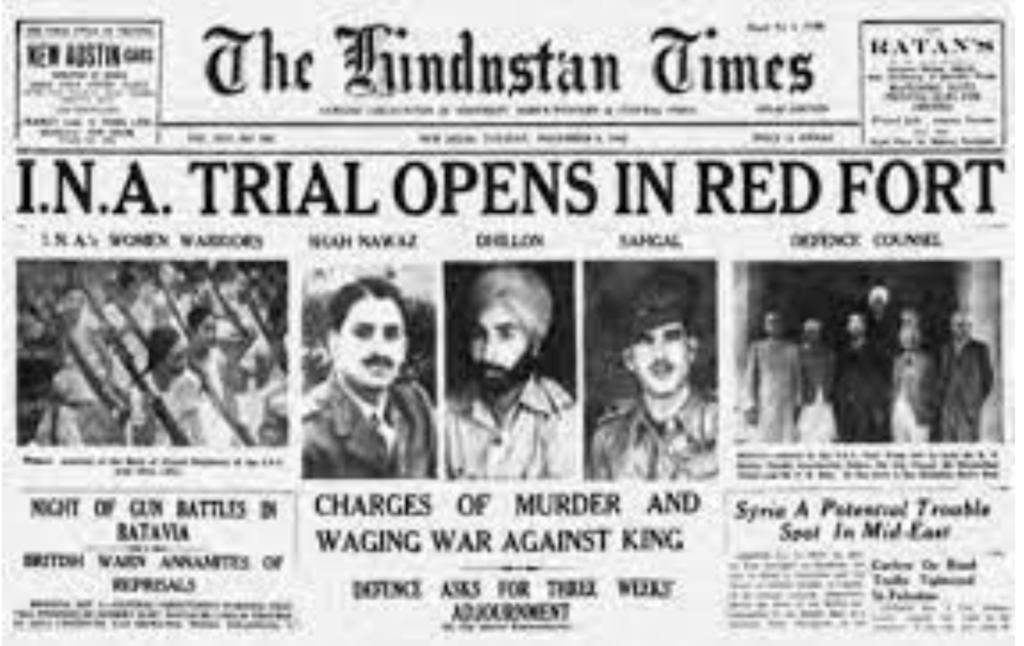
For this reason, trials of INA were required from the British point of view. So, its existence was officially announced by a press communiqué on 27 August 1945 (Bose). After that, the INA trials were initiated in November 1945 (Natanjan Singh ). The INA trials were the British Indian trial by courts-martial of several INA officers for charges variously for treason, torture, murder, and abetment to murder during World War II. Approximately ten trials were held in the Red Fort in Delhi, India. In total ten court martial were held. Overnight the INA became the center of observation throughout the country and people came to know that the INA fought against the British to free India from colonial rule.
As a result, a national movement took place because of INA trials and it was undoubtedly successful because of some reasons and they are as follows.
First of all, the INA trials reunited all communities of Indians during the movement. The national movement of India was seriously affected by the communal harmony of INA. Every man in India stood against the trial of the three INA officers. That INA trial represented the secular front of the country. Of the three prisoners under trial at the first court-martial, Shah Nawaz Khan was a Muslim, P.K. Sahgal was a Hindu, and G.S. Dhillon was a Sikh. It strengthened the secular sentiments in the country. The INA’s defense represented a secular cause. In this regard, on 4 July 1944, Netaji spoke to the INA officers and said,
“The blood of Hindu, Muslim, Sikh, and Christian intermingled and flowed freely for one cause a great, free, and united India.” (Singh)
The INA trials influenced the uprising of Indian people on a massive scale. The violence that broke out all over India in the wake of the INA trials was unprecedented. Though the Muslim community was usually branded as pro-British in its attitude, it expressed its willingness to resort to violence over the INA issue. In February 1946, the disturbances of people from all the communities, shouting the slogan of the INA, set lorries and tram-car ablaze, set fire to a Methodist Church, broke into and looted European homes, and ransacked shops and railway booking offices. The New York Times pointed out on 17 February 1946,
“Despite an uncompromising struggle between two factions, last week for the first time since 1921 Muslims and Hindus together staged street protests and riots against the British in Calcutta, Bombay, and New Delhi. The catalytic agent, in this case, was the Indian National Army, organized by a Japanese collaborator named Subhas Chandra Bose……” (Singh).
Mahatma Gandhi said,
“Though the INA failed in their immediate objective, they have a lot to their credit of which they might well be proud. The greatest among these was to gather together, under one banner, men from all religions and races of India, and to infuse into them the spirit of solidarity and oneness to the utter exclusion of all communal or parochial sentiment. It is an example we should all emulate” (Singh).
Thus, the INA trials rebuilt Indian unity in general people and shook the British Empire.
Secondly, the importance of secularism in Indian politics received due consideration from the INA as the emphasis laid by Congress leaders, specifically Nehru and Gandhi, on the secular nature of the INA. The British wanted to treat Indians as traitors and punish us accordingly. But the political situation has changed not only in India but also all over the world. Referring to the trial of Shah Nawaz Khan, Prem Sehgal, and G.S. Dhillon, Jawaharlal Nehru said,
” …behind the law, there was something deeper and more vital, something that stirred the subconscious depth of the Indian mind. Those three officers of the INA became symbols of India fighting for her independence. All minor issues faded away…The trial dramatized the old content: England versus India. It became a reality, not merely a question of law or forensic eloquence but rather a trial of strength between the will of the Indian people and the will of those who hold power in India. “ (Natanjan Singh ).
In this way, the INA trials reformed secularism in Indian politics and influenced the end of the British Raj.
Thirdly, the INA trials left a huge impact on the Indian troops in the British Indian Army. They stopped following orders from the British Empire.
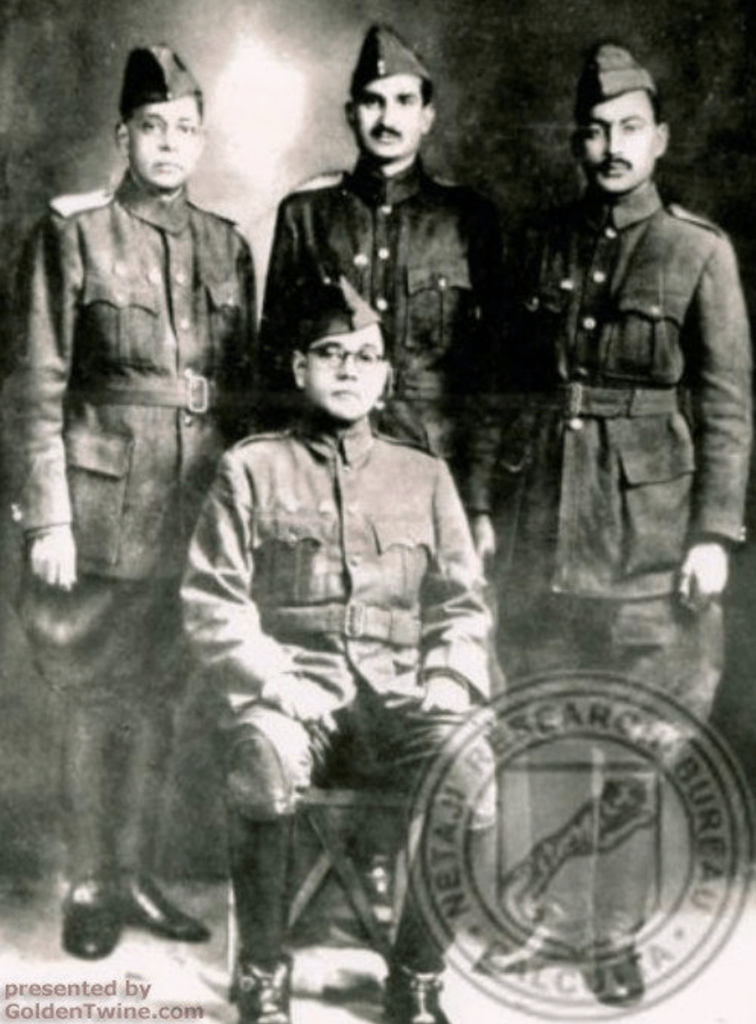
About the impact of these contacts on the Indian Army, Hugh Toye wrote:
” In the eleven months which had elapsed since the first contact of the Indian Army, Navy, Air Force with the mass of the INA in Rangoon, there had been widespread fraternization…Its result was a political consciousness which the Indian servicemen had never before possessed.” (Singh)
1200 men including senior non-commissioned officers of the Royal Indian Air Force camped in Delhi and Calcutta went on strike on 15 February 1946. Similarly, the revolt of the Royal Indians took place in February 1946. 78 ships of various descriptions stationed in Bombay, Karachi, Madras, Calcutta, Cochin, Visakhapatnam, Mandapan, Jamnagar, Andaman, and almost all the naval shore establishments in the country joined the community. (Singh, 2003).
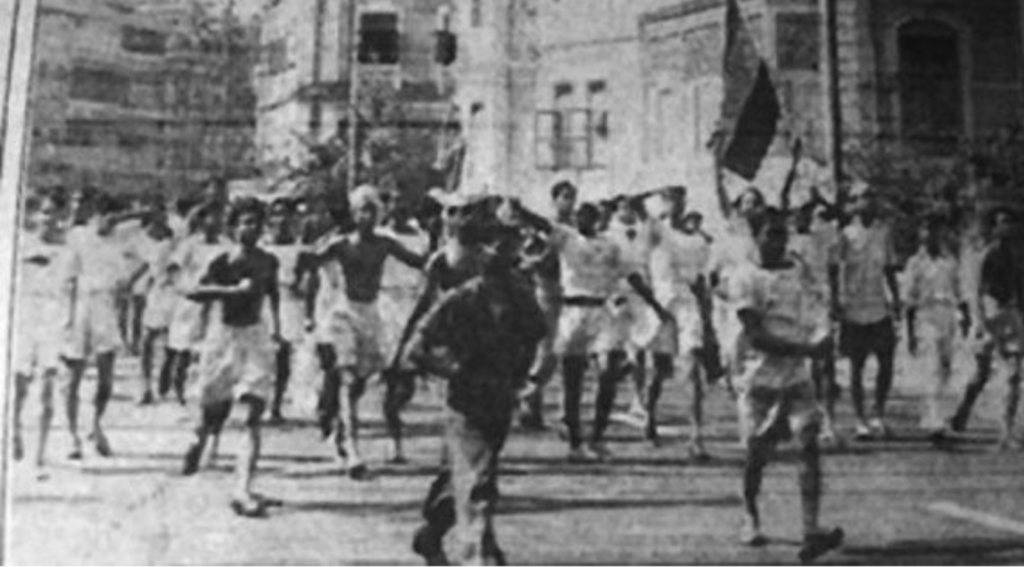
Notably, the British relied on Indian troops to rule India. As a result, the British Indian Army, Royal Indian Navy, and Royal Indian Air Force negatively affected British Raj. On the eve of the Indian rebellion of 1857, the East India Company Armies consisted of a total of 350538 troops. Among them, 211926 were Indians (“The Imperial Gazetteer of India: The Indian Empire. Volume II. Historical. Published Under the Authority of His Majesty’s Secretary of State for India in Council. (Oxford: The Clarendon Press. 1908. Pp. Xxxv, 573. New Edition.)”) .
In fact, during World War II, the British Indian Army started the war in 1939 with 200,000 men only. Despite several deficiencies in the Indian Army were highlighted in World War I and most of them were unaddressed until World War II ( Deshpande), the British Indian Army had become the largest volunteer army in history, rising to over 2.5 million men in August 1945 (“Commonwealth War Graves Commission Report on India.”). So, undoubtedly, Indian troops were very important to the Empire and their revolt was a direct threat to the British Raj.
On 4 March 1946, Lord Pethick-Lawrence, secretary of State’s Minute wrote to Mr. Attlee, Prime minister that:
” ….. India will not remain within the Empire, and as this will affect the King’s title …” (Bakshi)
For this reason, the uprising of Indian troops badly affected the administration of the British Empire.
Fourthly, the British Raj failed to control the uprising of Indian people on account of INA as it needed five British divisions of white British troops at the minimum. Even so, most had been sent back to England for demobilization. The British and American troops were homesick and simply war-weary after WWII. They were in no mood to attempt a second re-conquest of India. This time in the face of 25 lakhs combat-hardened Indian soldiers who had done so well in the war and were right then being demobilized. (Bakshi). Marshal Auchinlecks warned his Army commanders that they could not rely on the soldiers of the Indian Army. He warned the Government in London to hastily announce a date for the British departure. Undoubtedly, the center of gravity of British colonial rule in India was the loyalty of the native sepoy to the Raj and it was then totally gone. Thus, the British Empire could not stop the uprising of Indians due to a lack of British troops.
Last but not least, after the independence of India, former British Prime Minister Clement Attlee accepted the INA as the reason behind the end of the Empire. Mr. Attlee was the most critical decision-maker on the issue of Indian Freedom and had a conversation with Justice PB Chakravarthy, the first Governor of West Bengal in 1948. Justice PB Chakravarthy asked Mr. Attlee,
“Why did the British leave India even though they won WWII?”
Attlee was forthright in his response.
” It was Subhash Bose and his INA”
” What was the role of Mahatma Gandhi’s Non-violent struggle in shaping the British decision to leave? “ the Governor queried.
“minimal” was Attlee’s abrupt but emphatic reply. (Bakshi). As a result, it is undeniable that the British Raj vanished because of the INA.
Therefore, from the above analysis, it can be concluded that the uprising of Indian people from both civilians and military because of the INA trials restored the unity and identity of the Indian people. The British were not victorious in controlling this revolution as Indian troops did not support it. It should be noted that British soldiers were not ready to fight against Indians as they were homesick after WWII. Thus, it was the INA trials, without a doubt, which uprooted colonial rule from India.
Bibliography
- Books
- Bakshi, G. D. BOSE or GANDHI : Who Got India Her Freedom? . India, Amazon, 2019.
- Fay, Peter Ward. The Forgotten Army: India’s Armed Struggle for Independence. University of Michigan Press, 1993.
- Natanjan Singh, Gill Colonel. Story of INA. India, Publications Division of the Ministry of Information and Broadcasting of the Govt of India, 2001.
- Lebra, Joyee. C. The Indian National Army and Japan. ISEAS-Yusof Ishak Institute, 2008.
- C. Lebra, Joyee. Women Against the Raj: The Rani of Jhansi Regiment. ISEAS-Yusof Ishak Institute, 2008.
- Singh, Harkirat. The INA Trial and the Raj. Fisicalbook, 2003.
- Journal Articles
- “The Imperial Gazetteer of India: The Indian Empire. Volume II. Historical. Published Under the Authority of His Majesty’s Secretary of State for India in Council. (Oxford: The Clarendon Press. 1908. Pp. Xxxv, 573. New Edition.).” The American Historical Review, vol. 14, no. 2, Jan. 1909, pp. 333–34.
- Deshpande.Anurudh. “The Indian Army, 1850-1950” Oxford University Press, 2019, https://doi.org/10.1093/acrefore/9780190277727.013.410.
- Bose, Colonel S K, “Impact of INA on India’s Struggle for Independence” Journal of the United Service Institution of India, Vol. CXLI, No. 585, July-September 2011. https://www.usiofindia.org/publication-journal/impact-of-ina-on-indias-struggle-for-independence.html
- Mohanty, Prof Jagannath, “Azad Hind Fauj and Provisional Government: A Saga of Netaji” Orissa Review, August 2004. https://www.yumpu.com/en/document/view/4087928/azad-hind-fauj-and-provisional-government-government-of-orissa
- Report
- “Commonwealth War Graves Commission Report on India . .” Commonwealth, 2008.
- Website
- “Indian National Army .” Bookstwa. Accessed 28 October 2023.